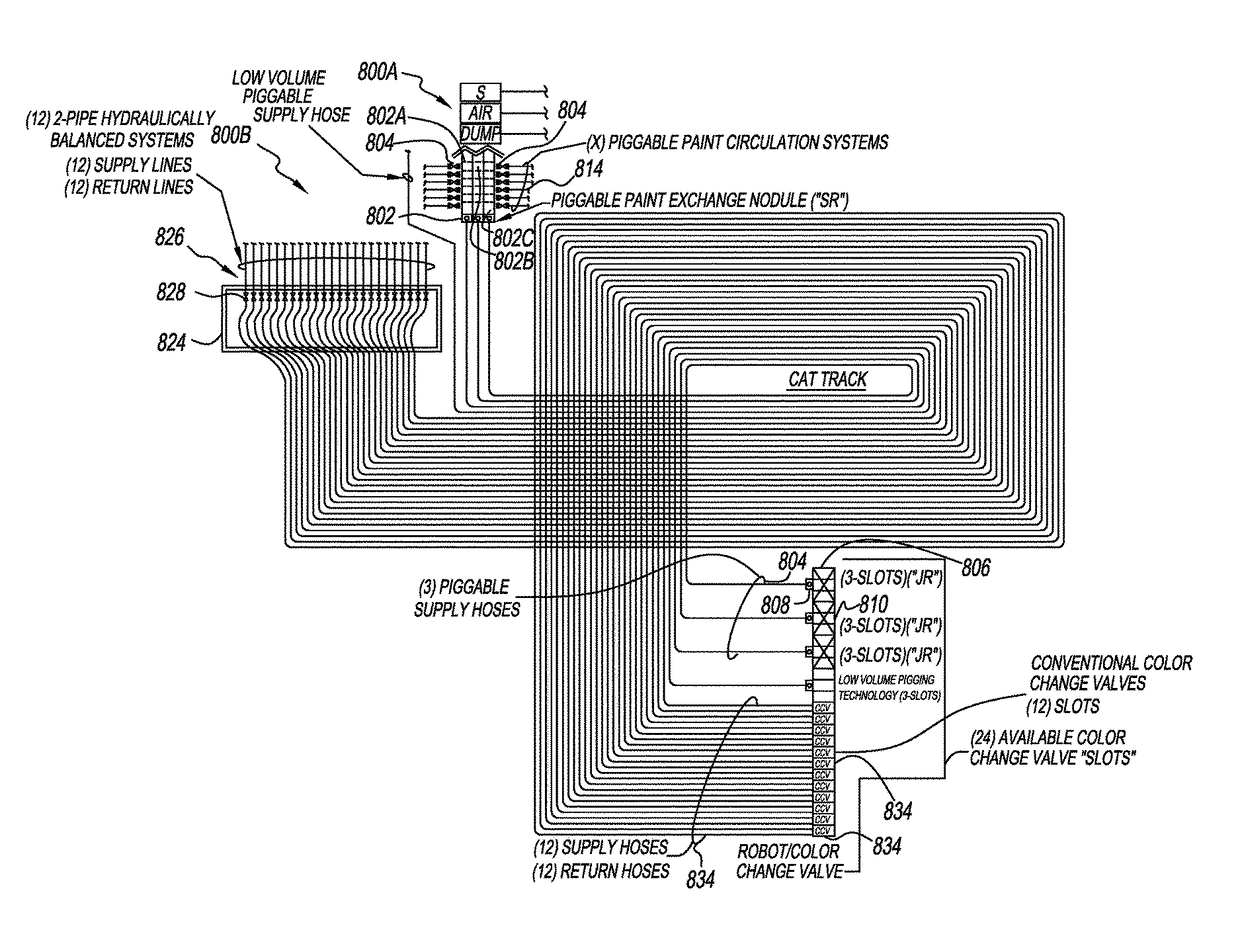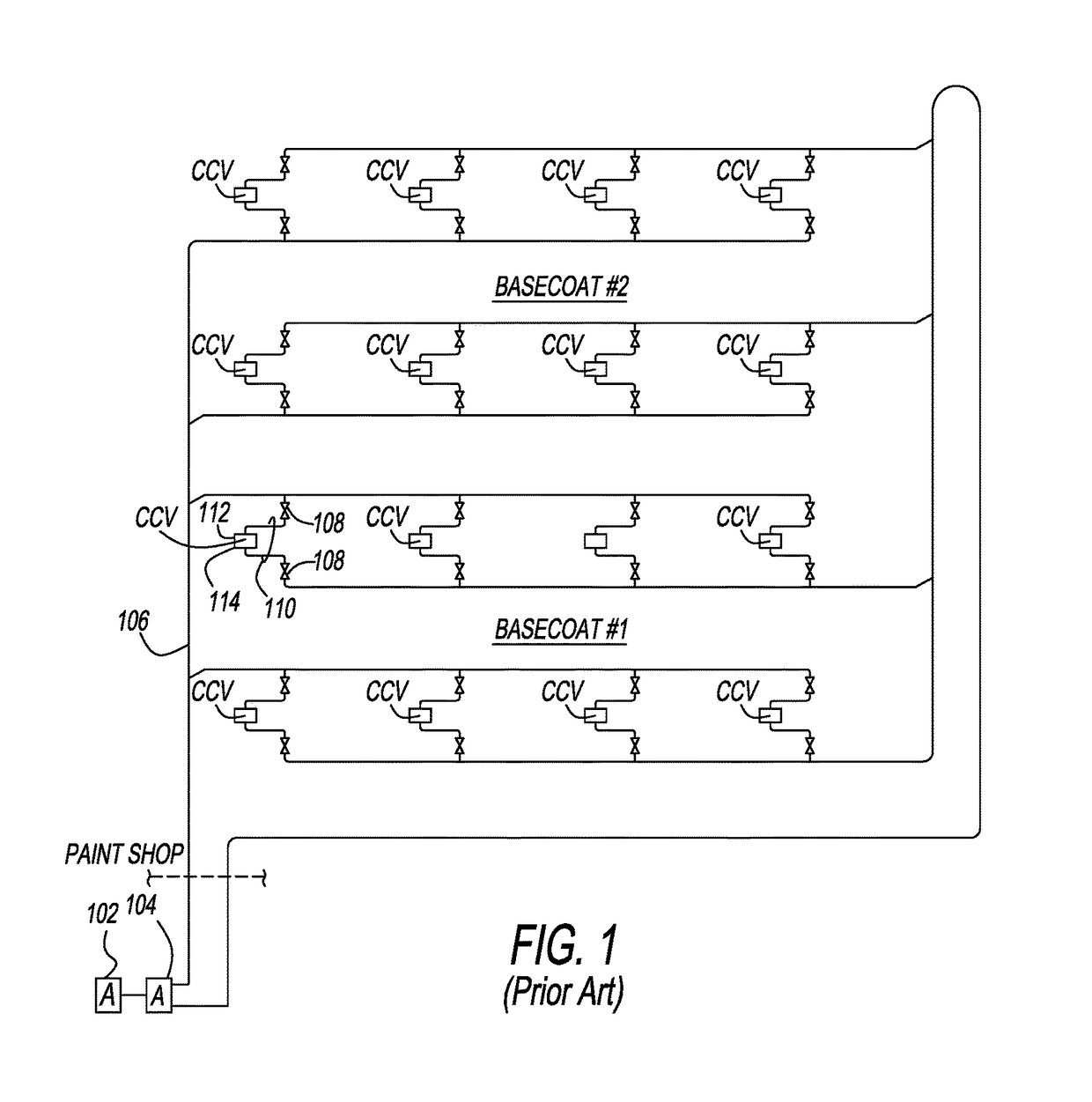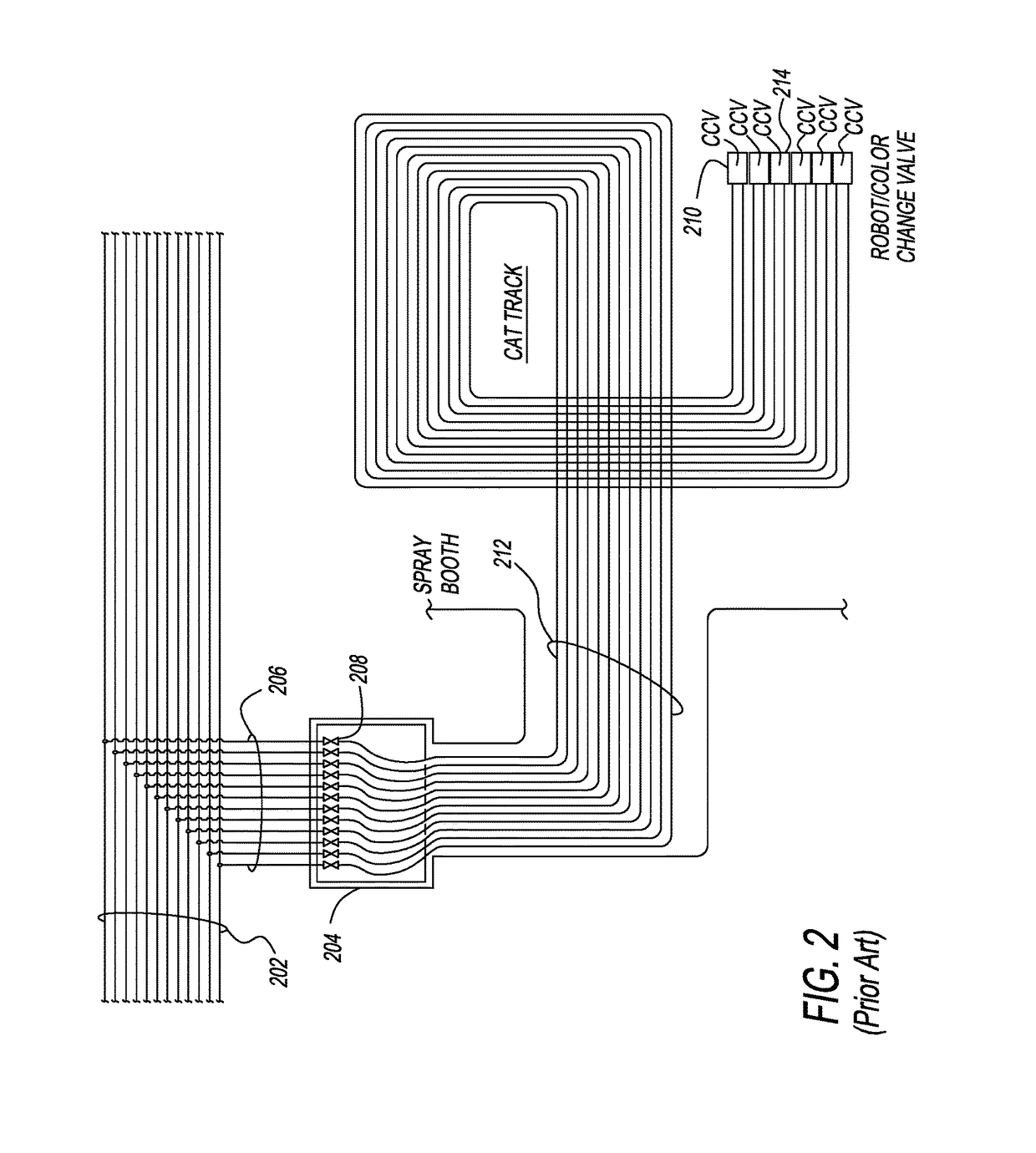Liquid distribution system and method
a distribution system and liquid technology, applied in the direction of liquid spraying apparatus, coatings, pipe elements, etc., can solve the problems of high automation and complex painting systems used in the automobile industry, complicated paint distribution systems, and many problems, so as to achieve low maintenance, reduce operating costs, and improve the effect of efficiency
- Summary
- Abstract
- Description
- Claims
- Application Information
AI Technical Summary
Benefits of technology
Problems solved by technology
Method used
Image
Examples
examples
[0303]FIG. 3 shows typical paint viscosities for two (2) different colors as supplied by manufacturers. The paint viscosities are shown against their shear rates. One can clearly see that for the same viscosity the shear rates are widely different for the four paints. This poses a serious issue for paint distribution system designers. In order to maintain a minimum velocity throughout the system and a specified pressure at the robots, the supply line pressures must be designed to accommodate these wide range of viscosities. For the prior art designs, the supply line and return line pressures for the four (4) colors are shown inn Table 1 below.
TABLE 1Normalized SupplyNormalized ReturnColorPressure (psi)Pressure (psi)Black1003-5Blue1505-7
[0304]As shown from the data in Table 1, there is a major difference between the supply line pressure and the return line pressure for all colors. Also, there are major differences between the supply line pressures for all individual colors. For paint...
PUM
 Login to View More
Login to View More Abstract
Description
Claims
Application Information
 Login to View More
Login to View More - R&D
- Intellectual Property
- Life Sciences
- Materials
- Tech Scout
- Unparalleled Data Quality
- Higher Quality Content
- 60% Fewer Hallucinations
Browse by: Latest US Patents, China's latest patents, Technical Efficacy Thesaurus, Application Domain, Technology Topic, Popular Technical Reports.
© 2025 PatSnap. All rights reserved.Legal|Privacy policy|Modern Slavery Act Transparency Statement|Sitemap|About US| Contact US: help@patsnap.com



